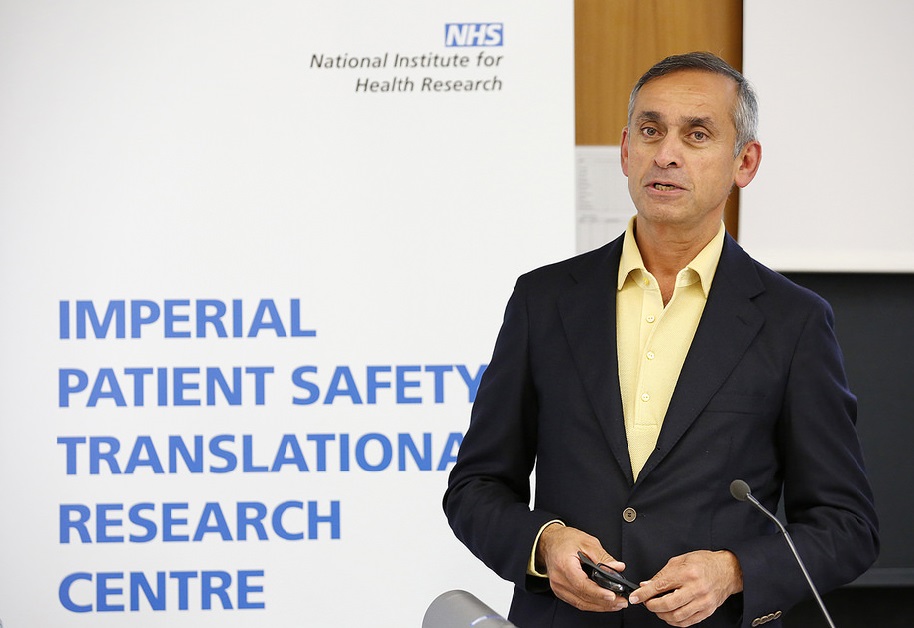Let me start by describing an average episode of care in 2017. John is in his mid-50’s, a smoker (average 10 cigarettes a day), drinks regularly (around 2 pints of beer or 2 medium glasses of wine on his heaviest drinking day) and does not exercise frequently. He is overweight and has a family history of heart disease. John booked an appointment with his local GP because he had been having worsening chest pains over the previous five weeks. His GP referred him to the local rapid access chest pain clinic, where he had tests such as an ECG. The tests did not show any abnormalities and John was sent back to his GP with a note asking his doctors to continue monitoring him in case his symptoms worsened. His GP received the summary but did not schedule a follow-up appointment with John because the practice was short-staffed that day.
John found the care episode frustrating. He had difficulty finding the clinic from his appointment letter and did not find an opportunity to ask questions during the consultation. He returned to work late because the wait for test results was longer than he had anticipated, and as a result, he missed an important meeting.
Thanks to advances in medicine, patients are now living longer than ever. Diseases that used to claim lives can now be treated or managed with medical regimens. In John’s case, had he been diagnosed with angina in follow-up visits to his GP, a disease where not enough blood flows to the heart causing sudden chest pains, medication would have helped to provide relief in the case of a sudden attack. His doctors could also suggest surgery if his symptoms failed to respond to medication.
On the other hand, from a quality and safety perspective, the design and orchestration of our healthcare system are quickly becoming unfit for purpose. Silos have been created around the types of care delivered – for example, GP versus specialist care – rather than around the needs of the patient, which often span many different types of care; patients and carers are included in the decision-making process only on occasion; and spending goes unscrutinised in terms of its value.
Our healthcare system is facing a double shot of complexity: increasingly complex care and increasingly complex patient needs. What we choose to do or not do in the face of these challenges will have an immense impact on the safety, quality and effectiveness of care.
If you read my blog yesterday, at the NIHR Imperial Patient Safety Translational Research Centre (NIHR Imperial PSTRC), we’ve done a lot in the past five years to make care safer for patients in the NHS. But there is a lot more to do. We want to help the NHS address these new challenges and make more patients’ lives better, sooner. We will do this by focusing on urgent research gaps; by working with our partners in the NHS, in industry, in government and in the community; and most importantly, by working closely with patients, carers and members of the public.
As the director of the Centre, I’m committed to ensuring that we bring new, innovative approaches to the biggest challenges facing health and care. In the last five years, advances in the areas of digital technology, deep learning, behavioural science and management science have yielded many new insights. If applied appropriately to the challenges of improving safety and quality, I believe we can achieve major advances.
In the next five years, I will be working with an excellent group of researchers, designers, clinicians and patient and public advisors to explore solutions to the following challenges:
- Overcoming the fragmentation of care and the potential for adverse events relating to transitions within the same care setting and between different settings of care;
- Improving the resilience and adaptability of teams and organisations;
- Designing healthcare processes and systems around patients’ needs and empowering patients to participate meaningfully in their own care;
- Preventing deterioration and delays in the care of patients with complex needs;
- Preventing medication errors and tackling the potential hazards of technology;
- Preventing diagnostic errors in primary care;
- Understanding the true cost of safety incidents and the value of safety interventions.
In the following weeks, we will be releasing the lay summaries of our project plans and inviting those who are interested in partnering with us to get involved. I would especially welcome patients, carers and members of the public to get in touch.
